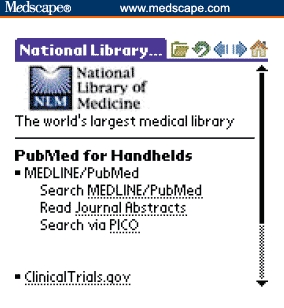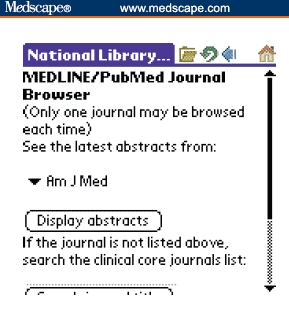Introduction
Convened by the National Research Council, the Clinical Research Roundtable identified 2 major obstacles to explain why, despite great expenditures by the National Institutes of Health and other funding organizations, advances in basic science and clinical research had not resulted in the delivery of better healthcare and formulation of health policy. These translational blocks are impedance to the translation of basic science discoveries into clinical studies and a block in bringing the clinical studies into medical practice and health decision making in systems of care.[1] In their 2003 report, evidence-based decision support to clinicians was included as part of the development of the information systems recommendation.
Basic and clinical research in the last decades has resulted in an unprecedented increase in scientific information. Breakthroughs in human genomics and proteomics, stem cell research, biomedical engineering, medical computing, molecular biology, and immunology are among the biggest contributors to the growth of biomedical literature. Currently, MEDLINE contains more than 12 million citations. Approximately 40,000 citations are added monthly from bibliographic citations and author abstracts obtained from about 4800 biomedical journals from 70 countries worldwide. Diagnostic methods have advanced quickly, and new treatment modalities, including drugs targeted to specific diseases, are being developed rapidly on the basis of cellular and molecular discoveries of cell DNA and protein function.
The Challenge of Evidence-Based Medicine
The steady increase in medical information and increasing demands brought about by new models of medical practice pose a major challenge to the practicing physician. Keeping updated on recent literature is a difficult task. It is essential that the clinician be provided with the tools to access information and to translate it into useful knowledge for decision support at the point of care. Sackett and Straus[2] demonstrated that allowing doctors easy access to evidence-based resources while making rounds increased the extent to which evidence was sought and incorporated into patient care decisions.
The use of a handheld device, such as a personal digital assistant (PDA) and Internet access through wireless networks, allows the clinician real-time access to evidence-based information at the point of care.[3] With a wireless handheld device, a physician can search MEDLINE/PubMed, retrieve abstracts and full-text articles, and access other online resources anywhere. Various filtering methods available through MEDLINE/PubMed can narrow a search to clinically relevant journal articles.
To attain the highest level of validity of evidence-based medicine (EBM), physicians need to obtain clinically useful information by searching, reading, and critically appraising the medical literature. Critical appraisal of journal articles involves determining the validity of the study (design, bias, and internal measurement validity) and deciding whether the clinical trial results are applicable to the patient. Information from the literature is then correlated with clinical data and one's own experience in making decisions regarding the patient's diagnosis, treatment, and management.[4] Although this is the most effective method of practicing EBM, it is also the most challenging.
Obtaining Information Quickly and Easily
Practicing EBM this way is neither easy nor convenient especially for the independent practicing physician. Clinicians will readily say that this is not the way medicine is practiced. Although many guidelines for reading the clinical literature are available,[5-7] the activity itself is too time-consuming and difficult. Medical journal articles are not designed for quick reading by the busy practitioner. There is no "bottom line" for fast comprehension. It requires a lot of practice before proficiency can be attained.
Doctors need resources to obtain information quickly. If the process of obtaining information is hard, then healthcare practitioners will not do it. According to Shaughnessy and colleagues,[8] as modified by Smith,[9] the usefulness of information is related to its relevance, validity, interactivity, and ease of obtaining it. Although the need is high, the likelihood of obtaining evidence is low if it is difficult to obtain.[2] Evidence needs to be easily obtained at the site where the physician sees patients.
What's needed is a tool that is easy to use, fast, and portable.[9] It should not require long hours of training and great technical skill. It should only require an Internet-enabled handheld device with access to knowledge sources and other applications. It should use artificial intelligence and be able to process natural language queries. It should provide clinically useful answers to clinical questions quickly.
A "Virtual Evidence Cart" at the Point of Care
What is needed is a virtual evidence cart (VEC) that will allow physicians to search current medical literature and other evidence-based resources, analyze search results, and present the results in an easy-to-read format. The results should be in a format that can be readily applied in a clinical environment. The results should show outcomes and bottom-line conclusions that will assist in patient diagnosis and care at the point of need. The VEC should be a portable handheld device, like a PDA in a mobile wireless network setting. Other medical software, such as drug databases and practice guidelines, can be added to recreate a VEC on a handheld device.
A typical situation may be a clinician asking a question about a patient's treatment, diagnosis, or prognosis by entering it on a handheld wireless device. A remote computer will wirelessly receive the query and process the subsequent steps. Once the relevant journal articles are found, postsearch software will scan through full-text articles, apply algorithms and rules of EBM, assign scores through preselected criteria, and provide a bottom-line conclusion. A summary will then be sent to the doctor's wireless handheld device (Figures 1 and 2).
Figure 1.

An Internet-capable wireless handheld device allows healthcare providers to search MEDLINE/PubMed at the point of care.
Figure 2.

Abstracts from core clinical journals can be read with handheld devices.
We have addressed real-time access to knowledge sources with wireless networks and handhelds.[3] Healthcare providers can access MEDLINE/PubMed and read journal article abstracts with wireless handheld devices. What needs to be addressed in the future is the quick processing of current evidence resulting in clinically useful information that a physician can use in patient care. We believe that only when a VEC resident on a wireless handheld device that every physician can use becomes available, will the practice of EBM be a reality for all.
Competing interests: none declared.
Contributor Information
Paul Fontelo, Senior Research Fellow, Office of High Performance Computing and Communications, National Library of Medicine, Bethesda, Maryland.
Michael Ackerman, Assistant Director, Office of High Performance Computing and Communications, National Library of Medicine, Bethesda, Maryland.
References
- 1. Sung NS, et al. Central challenges facing the national clinical research enterprise. JAMA. 2003;289:1278-1287. [DOI] [PubMed] [Google Scholar]
- 2. Sackett DL, Straus SE. Finding and applying evidence during clinical rounds: the "evidence cart." JAMA. 1998;280:1336-1338. [DOI] [PubMed] [Google Scholar]
- 3. Fontelo P, Ackerman M, Kim G, Locatis C. The PDA as a portal to knowledge sources in a wireless setting. Telemed J E Health. 2003;9:141-147. [DOI] [PubMed] [Google Scholar]
- 4. Sackett DL, Rosenberg WMC, Gray JAM, Haynes RB, Richardson WS. Evidence-based medicine: what it is and what it isn't. BMJ. 1996;312:71-72. [DOI] [PMC free article] [PubMed] [Google Scholar]
- 5. Haynes RB, Wilczynski N, McKibbon KA, Walker CJ, Sinclair JC. Developing optimal search strategies for detecting clinically sound studies in MEDLINE. J Am Med Inform Assoc. 1994;1:447-458. [DOI] [PMC free article] [PubMed] [Google Scholar]
- 6. Greenhalgh T. How to read a paper. Papers that report diagnostic or screening tests. BMJ. 1997;315:540-543. [DOI] [PMC free article] [PubMed] [Google Scholar]
- 7. How to read clinical journals: I. Why to read them and how to start reading them critically. Can Med Assoc J. 1981;124;555-558. [PMC free article] [PubMed] [Google Scholar]
- 8. Shaughnessy AF, Slawson DC, Bennett JH. Becoming an information master: a guidebook to the medical information jungle. J Fam Pract. 1994;39:489-499. [PubMed] [Google Scholar]
- 9. Smith R. What clinical information do doctors need? BMJ. 1996;313:1062-1068. [DOI] [PMC free article] [PubMed] [Google Scholar]


